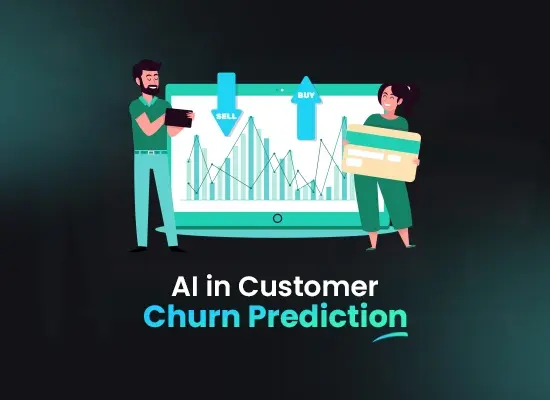
Contents
What is LLMOps?
What are LLMOps? LLMOps, short for Large Language Model Operations, delves into administering, implementing, and refining open source large language models (LLM) such as Bloom, OPT, and T5. This survey of large language models encompasses guidelines and procedures addressing challenges and applications in LLM development, spanning infrastructure management, integration, testing, releasing, and deployment.
When exploring generative AI vs Large language models, it becomes crucial to understand LLMOps. This survey of large language models emphasises the importance of efficient administration, implementation, and refinement of open source large language models like Bloom, OPT, and T5. Addressing challenges and applications, LLMOps guides automation and monitoring throughout the LLM development lifecycle, including infrastructure management, integration, testing, releasing, and deployment.
Exploring the realm of generative AI vs Large Language Models (LLM), one encounters the question: What is LLMOps? LLMOps refers to the operational intricacies inherent in open-source large language models. A survey of large language models reveals challenges and applications that span data science, software engineering, and DevOps. In the dynamic landscape of generative AI vs Large Language Models, creating an LLM involves multifaceted processes.
Beyond mere training, collaborative efforts among data scientists, software engineers, and DevOps engineers navigate the tasks depicted in the flowchart. In a production setting, managing vast data, making real-time predictions, and ensuring reliability amplifies complexity, demanding cohesive efforts across disciplines. The challenges and applications of large language models unfold in the intricate interplay of generative AI vs Large Language Models.
What is LLMOps? It’s an open-source large language model operation framework, essential for addressing the challenges and applications of large language models. A survey of large language models emphasises LLMOps, going beyond conventional practices. LLMOps encompasses infrastructure setup, performance tuning, data processing, and model training. This survey delves into how LLMOps ensure optimal scalability, performance, and efficiency.
By navigating challenges and optimising processes, businesses can unlock their maximum potential and gain a competitive advantage. In the realm of generative AI vs large language models, LLMOps plays a pivotal role in facilitating the seamless integration and operation of these advanced language models, enabling organisations to harness their capabilities effectively.
Open Source Large Language Model
The question of what is LLMops in open source large language model refers to the optimization of computational resources for large language models (LLMs), particularly in an open-source context. A survey of large language models explores challenges and applications, emphasizing the need for efficient architectures that leverage GPUs and TPUs. Open source large language models face questions regarding generative AI vs large language models, highlighting the balance between low latency and high throughput for real-time applications. Efficient LLMOps architectures are essential for managing massive data effectively.
What is LLMOps? LLMOps, an open-source large language model, plays a pivotal role in the survey of large language models. Exploring challenges and applications of large language models, LLMOps enhances Continuous AI Integration/Continuous Deployment (CI/CD). This framework empowers data scientists, facilitating swift experimentation with novel concepts in feature engineering, model design, and hyperparameters. LLMOps enables scientists to autonomously build, test, and deploy new pipeline components to the target environment, showcasing the intersection of generative AI vs large language models.
LLMOps is an open-source large language model (LLM) deployment and operationalization pipeline. A survey of large language models reveals challenges and applications of LLMs. In the context of generative AI vs large language models, understanding the nuances is crucial. The iterative testing of LLM methods and modeling is a pivotal phase in the development and experimentation of this open-source large language model. The output is source code for the generative AI development pipeline stages, marking the initial steps in the LLMOps journey. Continuous integration is the subsequent stage, involving the creation and testing of source code, resulting in pipeline components geared for deployment. The challenges and applications of large language models come to the forefront during these stages, shaping the trajectory of LLMOps.In the continuous delivery stage, the model transforms into a prediction service. Finally, monitoring collects statistics on model performance from live data, which serves as a trigger for fresh pipeline execution or experiments. Data and model analysis are still manual operations that require data scientists to review data before beginning a new experiment iteration.
What is LLMOPS? LLMOPS, or Large Language Model Open Source, represents an open-source large language model. In a survey of large language models, exploring challenges and applications of large language models becomes crucial. Generative AI vs large language models highlights distinctions in model evaluation, convergence, NaN value generation, and component integration. Continuous integration assesses various model and pipeline components, including unit testing, convergence, and artifact creation. Continuous delivery emphasizes compatibility assurance with target infrastructure, testing prediction service APIs, and deploying to pre-production and production environments with varied levels of automation, addressing challenges in large language model development.
Seamless Collaboration | Cost-Efficient Solutions | Faster Time-to-Market

A survey of large language models
There are numerous tools and frameworks available on the market for LLMOPs, and selecting the proper mix of tools and frameworks can considerably improve the efficiency of the GAI solution. These tools perform a variety of services, including model training, pipeline automation, and continuous integration and deployment (CI/CD). By using the correct tools and frameworks, you may improve the performance of your language models, reduce the possibility of errors, and obtain better outcomes in less time. I recommend the following tools and frameworks for various LLMOps components.
Creating a large language model is a complex and iterative process that involves creativity, technical expertise, and data-driven thinking. A team of professionals must develop and implement the model’s architecture, selecting the proper algorithms, optimisation strategies, and hyperparameters to ensure that the model produces high-quality, coherent data. Once trained, the model must be fine-tuned and evaluated to ensure it produces the correct type of material.
Model management guarantees that the model is developed efficiently and properly maintained throughout its existence. Version control helps you to track changes to the model’s code, data, and configurations, guaranteeing that the model can be duplicated and rolled back to prior versions as needed.
Containers provide a dependable and consistent environment for running the model, allowing for simple deployment and scaling. Model serving guarantees that the model is available to users, with sufficient monitoring and optimisation to ensure that it runs correctly and efficiently. Effective model management procedures allow you to securely create and deploy big language models.
Performance management is critical in LLM solution development to ensure that the model runs optimally and achieves the desired results. Developers can use visualization tools to uncover performance issues and obtain insights into the model’s behavior, which can help them pinpoint areas for optimization. Pruning and quantization are examples of optimisation strategies that can increase model performance while reducing processing needs.
Observability tools allow developers to watch the model’s performance and spot faults in real time, allowing for quick resolution. By employing appropriate performance management strategies, developers can ensure that huge language models run efficiently, effectively, and reliably, making them suited for a wide range of applications.
Data management relates to the organization, storage, tracking, and retrieval of enormous volumes of data used to train and fine-tune language models. This requires various critical components, including data storage, tracking, vector search, and so on. LLMs require massive volumes of data to function effectively, frequently on the order of billions or trillions of words.
This data must be kept in a fashion that is efficient, scalable, and available to the model during training and prediction. In addition to storing enormous volumes of data, keeping track of the metadata linked with that data is critical. Vector search algorithms are frequently used to manage data in large language models.
To ensure success when implementing LLM solutions, numerous critical criteria must be carefully considered. First and foremost, the model’s supporting infrastructure must be appropriately sized and configured to meet the model’s computational demands, which include memory, storage, and processing power. Furthermore, the model’s performance must be regularly evaluated and optimized to ensure that it operates as planned, and any mistakes or abnormalities must be corrected as soon as possible. Another critical concern is data security, as large language models frequently deal with sensitive information that must be safeguarded against unauthorized access or breaches.
Generative AI vs large language models
What is LLMOps? explores the pivotal role of open-source large language model operational design in deploying and managing models effectively. A survey of large language models emphasizes the significance of the LLMOps architecture, ensuring infrastructure meets computational requirements for memory, storage, and processing power. This is essential for challenges and applications of large language models, encompassing data preparation, model training, and deployment.
Open-source large language models demand robust LLMOps, incorporating version control and continuous integration and delivery tools. In the realm of generative AI vs large language models, understanding LLMOPS is crucial for optimizing efficiency and effectiveness in diverse applications. LLMOPS, or Large Language Model Operations, is a crucial aspect in the realm of open-source large language models. A survey of large language models reveals the significance of robust LLMOps architectures, emphasizing their role in ensuring data security, privacy during training, and facilitating efficient model performance monitoring.
These architectures are pivotal platforms for the swift deployment of model upgrades or new versions. Understanding the challenges and applications of large language models is integral to optimizing their potential in natural language processing tasks. In the context of generative AI vs large language models, a well-designed LLMOPS architecture becomes paramount, offering a foundation for addressing challenges and enhancing overall performance.
“What is LLMOPS?” explores the distinction between two groundbreaking AI entities—generative AI and large language models. The first, akin to generative-model AI, focuses on content creation. Conversely, the second, exemplified by open source large language models, represents a class of models. “A survey of large language models” delves into the challenges and applications of these models, highlighting their diverse capabilities. In the comparison of “generative AI vs. large language models,” the dissimilarity between generative language models and huge language models becomes evident, emphasizing their unique roles in the evolving landscape of artificial intelligence.
An open-source large language model, LLMOps raises questions about generative AI vs large language models. A survey of large language models reveals challenges and applications. It’s not precisely apples to apples, but their respective use cases have many parallels. They can work well together as copilots, paving the way for a bright future in healthcare and ecommerce. With billion-dollar markets, these two phenomena, generative AI vs large language models, can soar high. Generative AI is characterized as artificial intelligence that focuses on developing models capable of producing creative material, such as graphics, music, or prose.
By absorbing massive volumes of training data, generative AI models can use advanced machine-learning algorithms to understand patterns and generate output. They use techniques like recurrent neural networks (RNNs) and generative adversarial networks (GANs). In addition, a transformer architecture (represented by the T in ChatGPT) is a critical component of this technology.
An image-generation model, for example, may be trained on a dataset containing millions of images and drawings to learn the patterns and qualities that comprise various sorts of visual content. Similarly, music- and text-generation algorithms are trained on large amounts of audio or text data, respectively.
Open source large language model is a type of AI model that understands natural language processing (NLP) and generates human like text-based content in response. Unlike generative AI models, which have a wide range of applications in the creative fields, open source large language models are exclusively built to handle language-related problems. Their range includes customisable foundation models. Because memory units are included into the structures of these huge models, they can interpret and recall contextual information. They store and retrieve important information, allowing them to respond coherently and contextually.
Seamless Collaboration | Cost-Efficient Solutions | Faster Time-to-Market

Challenges and applications of large language models
LLMs have swiftly changed multiple sectors and areas, enabling a wide range of applications and use cases. Their astonishing capacity to understand and synthesize human-like writing has created new opportunities and transformed established operations. In this part, we will look at the fields where LLMs have had a substantial impact.
Self-supervised learning has transformed the area of large language models (LLMs), allowing models to be trained on enormous volumes of unlabeled text data without requiring human annotation. LLMs can successfully capture language’s fundamental patterns, semantic linkages, and contextual comprehension by utilizing self-supervised learning techniques such as masked language modeling. This strategy has significantly increased the quantity and scope of training data available to LLMs, allowing them to benefit from the huge and diverse knowledge available on the internet.
The capacity to analyze large amounts of material and recognise trends in language use, grammar, and syntax is essential for an LLM. This procedure, known as training, entails feeding the model millions or even billions of phrases or paragraphs of text. The LLM then utilizes this information to learn how to predict the next word in a sentence, finish a phrase, or respond to a question.
1- Content Creation:
Large Language Models have evolved as effective content production tools, transforming how we produce written material across multiple fields. LLMs excel at comprehending context, syntax, and language nuances, enabling them to write human-like text in a variety of styles and genres.
Content creation is a broad term that includes things like authoring articles, blog posts, marketing copy, product descriptions, and more. Human authors usually conduct significant research, outlining, drafting, and editing before creating content. LLMs can help significantly in this process by supporting human writers with certain chores.
One of the primary benefits of LLMs for content generation is their capacity to produce cohesive and contextually relevant material. LLMs get a profound awareness of language patterns through enormous data training, allowing them to write high-quality, grammatically correct, and semantically meaningful material. They can even emulate individual authors’ styles and tones, as well as adapt to varied target groups.
2- Research:
LLMs contribute significantly to research by assisting with literature reviews, idea formulation, data analysis, writing, domain-specific expertise, and teamwork. They can effectively analyze a large number of research publications, saving time while offering a thorough overview of prior work. LLMs can provide prompts and investigate new research avenues, resulting in unique ideas and theories. However, LLMs lack the rationale that humans use when navigating in the actual world. They may present incorrect facts, which researchers should thoroughly evaluate.
3- Copilots:
LLMs can be effective copilot helpers in a variety of fields, including legal, coding, and design work. In these situations, LLMs can provide essential assistance and increase productivity. In legal settings, LLMs can help lawyers by analyzing and summarizing legal documents, performing legal research, and offering insights into case law and related legislation. They can assist with the drafting of legal papers, contracts, and pleadings, making ideas based on their knowledge of legal language and precedents.
LLMs can act as programming assistants, recommending code completion, identifying errors, and proposing solutions to coding problems. They can help create code samples, improve code readability, and provide documentation for programming languages or libraries. Chat2VIS (2023) is a design assistant that creates data visualizations with natural language. The authors looked at pre-trained ChatGPT and two types of GPT-3 models. Engineered cues were introduced into the models to produce desired results during testing. An overview of Chat2VIS is provided below.
Prompting in LLMs, or large language models, refers to providing the model with a specific input or instruction to direct its text generation. It entails giving a beginning point or background, usually in the form of a printed prompt or sample lines. Consider giving the model a specific question or topic to focus on before it responds. Prompts influence the content, style, and direction of the generated text, so shaping the output. By prompting the LLM, users can direct it to generate text that corresponds to their desired purpose or intention.
Above is an example of one of these prompts. The LLM may not have been trained on this particular prompt, but with its current proficiency in both English and French, it could accurately translate the sentence. Zero-shot Visual Question Answering can be performed by off-the-shelf LLMs with the help of the plug-and-play module Img2LLM. The main idea behind Img2LLM is that the picture content can be translated into artificial question-answer (QA) pairs that are supplied into the LLM as part of the prompt by using a vision-language model in conjunction with a question-generation model. These model QA pairings address the modality gap by verbally conveying the image content and the task disconnect by having the LLM watch the QA task.
Conclusion
I wouldn’t advise approaching ChatGPT for medical advice, despite the fact that it’s groundbreaking. How long, though, until AI allows us to accomplish even that? How much more precision is required from LLMs? Researchers are currently working to find answers to these questions. Large language models (LLMs) have a plethora of potential applications in the future as long as they continue to progress. Enhancements in reasoning skills, decreased biases, and better contextual comprehension are some of the main areas of emphasis for the ongoing study and development of future LLMs.
The ethical ramifications and difficulties of LLMs, such as data privacy, fairness, and openness, are also being addressed. The future of LLMs will be shaped by the cooperative efforts of academics, developers, and policymakers. This will guarantee their responsible and advantageous incorporation into a range of sectors, such as healthcare, education, customer service, and the creation of creative material.
In the field of computerized language processing, something new has come to light: Large Language Models (LLMs). These powerful machines are capable of understanding complex linguistic patterns and producing responses that make sense within their context. Artificial intelligence (AI) has given rise to large language models (LLMs), which are effective tools for answering questions, translating text, and doing natural language processing (NLP).

Author Bio
Frequently Asked Questions (FAQs)
What does a large language model, such as chatgpt, analyze to perform its functions?
To understand the patterns and probabilities of natural language, a large language model—like chatgpt—analyzes a lot of text data. It makes use of a neural network design known as Transformer, which concentrates on the most important segments of the input sequence using a process known as self-attention. This enables it to produce well-reasoned and well contextualized answers for a range of natural language tasks, including question answering, summarization, text production, and translation.
how does a large language model work
By identifying patterns in massive datasets, a large language model analyses and produces text that is similar to that of a human. It comprehends syntax, semantics, and context through the use of deep neural networks. It improves its comprehension during training, allowing it to react appropriately and produce clear, pertinent words when asked.
how to build a large language model?
To construct a large language model, gather a diverse and extensive dataset, design a neural network architecture suitable for natural language processing, train the model using powerful hardware and specialized algorithms, fine-tune parameters, and validate its performance to achieve effective language understanding and generation capabilities.
how to train a large language model
Training a large language model involves feeding it vast datasets to learn patterns, semantics, and grammar. Iterative optimization adjusts model parameters to minimize prediction errors. Fine-tuning balances performance and resource constraints. Continuous evaluation refines the model, ensuring adaptability to diverse language tasks.
what are large language models?
Large language models are advanced artificial intelligence systems, like GPT-3.5, designed to understand and generate human-like text. These models use vast amounts of data to learn language patterns, enabling them to perform tasks such as natural language understanding, generation, and translation on a broad scale.
is chatgpt a large language model?
Yes, ChatGPT is a large language model developed by OpenAI, specifically based on the GPT-3.5 architecture. It excels in natural language understanding and generation, enabling it to engage in conversations and perform various language-related tasks with users.
is bert a large language model
BERT (Bidirectional Encoder Representations from Transformers) is a large language model developed by Google. Trained on vast datasets, it excels in understanding context and relationships in text. Its bidirectional architecture enables more nuanced comprehension, making it a powerful tool for natural language processing tasks.





